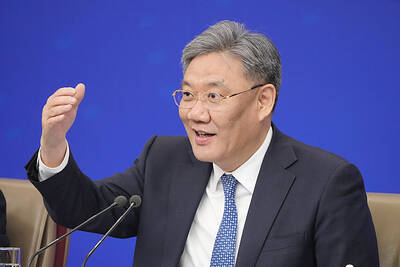"I am afraid," one prisoner awaiting interrogation and almost certain death at the hands of the Gestapo scrawled on the walls of his Paris prison cell.
"Never confess," reads another defiant message etched into the plaster nearby.
Heart-rending words transformed by history into epitaphs, these and other messages on long-forgotten walls in the Gestapo's World War II Paris headquarters went on exhibit for the first time ever over the weekend, part of France's annual heritage day.
More than 15,000 sites normally closed to the public, ranging from the national archives to the finance ministry, opened their doors to some 10 million visitors on Saturday and yesterday.
Most of the rooms at 11, rue de Saussaies in the 8th arrondissement were renovated after the French interior ministry took possession of this notorious address where hundreds, if not thousands, of resistance fighters and other hapless victims of the Nazi occupation were tortured and condemned to die.
It was as if France's post-war leaders were eager to turn a page.
But a few prison cells were left untouched, and the plaintiff expressions of fear and foreboding, patriotism and pride, preserved on their walls stand today as a moving testament of Gestapo cruelty and human defiance.
"Frankreich ueber alles" -- "France above all" -- reads on inscription with biting irony, a play on words transforming the title of the German national anthem.
"Believing in yourself gives one the power to resist despite the bathtub and all the rest," reads another, a dark allusion to a preferred technique of torture practiced by the Gestapo.
"Don't talk," commands another, as if to give courage.
Most of the unfortunates interrogated and tortured here were later executed or deported to camps, historians say.
The few rooms that remain from that era have been left intact: the ceiling lamp that still casts a wan, sinister light over the room; the thick metal ring attached to the wall, to which prisoners were chained; the barred window with a view of the interrogation chambers on the other side of the courtyard.
The prisoner graffiti -- written with bits of lead or pencils hidden in shirt collars, or simply carved with any sharp object at hand -- is today protected by glass barriers.
Many of those detained here had no illusions as to their destiny. "Julien. 20 years old. Headed for the post," reads one, referring to the wooden poles to which prisoners were attached before being executed by firing squad.
"Labiscotte. Arrived June 8, 1944. For liberty of for death?" reads another, still daring to hope.
And yet another: "Honored to be condemned by the Bosh. Goodbye forever to France and my loved one," it says, using a common name for Germans during the war.
Some inscriptions are like diary entries: "Marcel is thinking of Simone and Kiki"; "Guillaume loves Marianne"; "I cannot sleep for thinking about my parents and my beloved Louisette."
Other parts of the walls are like bulletin boards, with messages the authors hoped would, somehow, find their way to intended recipients. "Roger: your father, your cousin and Colette's father came through here 24-5-44."
There are even expressions of optimism -- "We will be free by Christmas 1944" -- and philosophical resignation: "Life is beautiful."
United in their misery, one finds the hammer-and-sickle emblem of communism next to Christian prayers. "My God I want, All that you want, Because you want it, As you want it, As much as you want it," reads one.
The walls were also common ground for the barely literate and the highly cultivated, such as Yvette Marie-Jo Wilbort who -- not daring to imagine that she would live to see the war's end -- quoted from memory, for her epitaph, a verse from a poem by Alfred de Vigny.
"Wailing, pleading, crying -- these are the coward's call. Assume your heavy and onerous burden, the one that fate has cast your way. And then, like me, suffer and die in silence."
Wilbort survived, one of the few.

‘EYE FOR AN EYE’: Two of the men were shot by a male relative of the victims, whose families turned down the opportunity to offer them amnesty, the Supreme Court said Four men were yesterday publicly executed in Afghanistan, the Supreme Court said, the highest number of executions to be carried out in one day since the Taliban’s return to power. The executions in three separate provinces brought to 10 the number of men publicly put to death since 2021, according to an Agence France-Presse tally. Public executions were common during the Taliban’s first rule from 1996 to 2001, with most of them carried out publicly in sports stadiums. Two men were shot around six or seven times by a male relative of the victims in front of spectators in Qala-i-Naw, the center

Australia’s opposition party yesterday withdrew election promises to prevent public servants from working from home and to slash more than one in five federal public-sector jobs. Opposition leader Peter Dutton announced his conservative Liberal Party had dropped its pledge that public servants would be required to work in their offices five days a week except in exceptional circumstances. “I think we made a mistake in relation to this policy,” Dutton told Nine Network television. “I think it’s important that we say that and recognize it, and our intention was to make sure that where taxpayers are working hard and their money is

Canadian Prime Minister Mark Carney is leaning into his banking background as his country fights a trade war with the US, but his financial ties have also made him a target for conspiracy theories. Incorporating tropes familiar to followers of the far-right QAnon movement, conspiratorial social media posts about the Liberal leader have surged ahead of the country’s April 28 election. Posts range from false claims he recited a “satanic chant” at a campaign event to artificial intelligence (AI)-generated images of him in a pool with convicted sex offender Jeffrey Epstein. “He’s the ideal person to be targeted here, for sure, due to

DISPUTE: Beijing seeks global support against Trump’s tariffs, but many governments remain hesitant to align, including India, ASEAN countries and Australia China is reaching out to other nations as the US layers on more tariffs, in what appears to be an attempt by Beijing to form a united front to compel Washington to retreat. Days into the effort, it is meeting only partial success from countries unwilling to ally with the main target of US President Donald Trump’s trade war. Facing the cratering of global markets, Trump on Wednesday backed off his tariffs on most nations for 90 days, saying countries were lining up to negotiate more favorable conditions. China has refused to seek talks, saying the US was insincere and that it